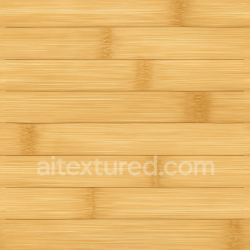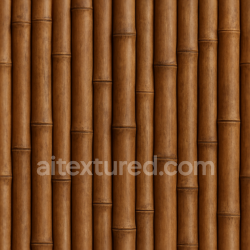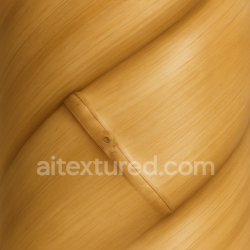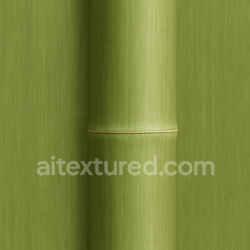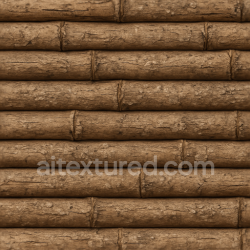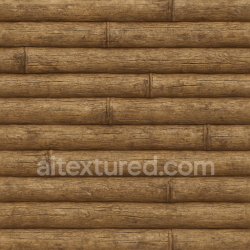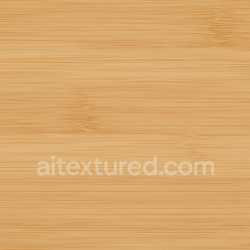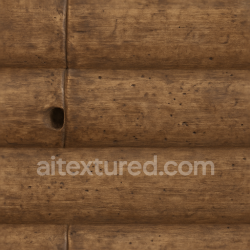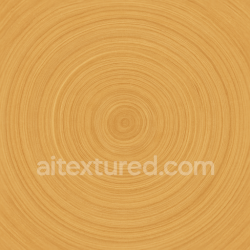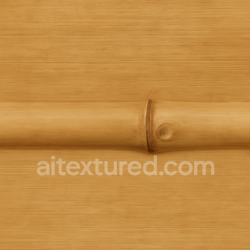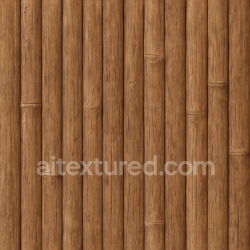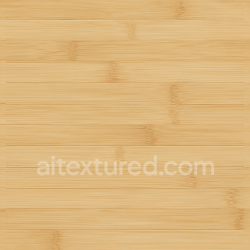Mastering Furniture Wood Textures for Realistic PBR Workflows
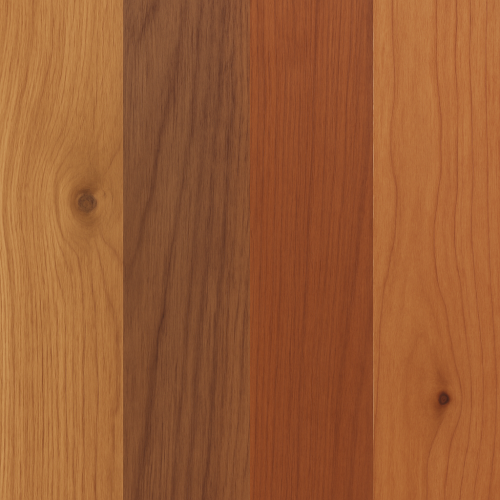
Acquiring high-fidelity PBR textures of furniture wood demands a rigorous approach to capturing and processing visual data that faithfully reproduces the complex interplay of color, microstructure, and reflectance inherent to wood surfaces. The challenge lies not only in obtaining detailed albedo maps that reveal natural grain and knots but also in generating accurate roughness, normal, ambient occlusion, and height information that together drive physically plausible shading in real-time engines like Unreal Engine or Blender’s Cycles/Eevee. Among the various acquisition techniques, photogrammetry and scanning technologies stand out for their ability to provide high-resolution, physically consistent datasets, yet each requires careful calibration and post-processing to ensure seamless, tileable results suitable for PBR workflows.
Photogrammetry, the process of reconstructing 3D geometry and texture information from multiple overlapping photographs, remains a versatile method for furniture wood texture acquisition. Successful photogrammetric capture starts with controlled lighting to minimize shadows and specular highlights that can introduce noise into albedo data. Diffuse, even illumination—often achieved using softboxes or light tents—is essential to isolate the true base color of the wood without baked-in shading. Since wood surfaces exhibit complex reflectance properties, it’s advantageous to capture photographs using a polarizing filter to reduce unwanted glare, thus preserving subtle color variations and fine grain details critical for the albedo map.
The choice of camera and lens impacts the fidelity of the capture significantly. High-resolution APS-C or full-frame cameras paired with prime lenses offering minimal chromatic aberration and high sharpness allow the capture of fine wood pores and micro-variations in grain. A sturdy tripod stabilizes each shot, reducing motion blur and ensuring consistent framing, while overlapping images by approximately 60–80% coverage allows photogrammetry software to reconstruct accurate spatial geometry and texture maps. For furniture wood, where subtle surface features like knots or cracks contribute heavily to visual realism, it is beneficial to capture at resolutions exceeding 50 megapixels, enabling future downsampling and detail retention.
Once images are captured, the photogrammetry pipeline typically involves structure-from-motion (SfM) algorithms that generate a sparse point cloud, followed by dense reconstruction and texture baking. The resulting mesh and textures provide an excellent base for PBR material authoring but often require refinement. Raw photogrammetry outputs frequently contain baked lighting cues—soft shadows and indirect illumination—that must be removed to create physically accurate albedo maps. This can be addressed by leveraging high-dynamic-range (HDR) environment captures during shooting and employing software tools or manual editing to separate shading from color information. Additionally, the albedo map should be calibrated against known color standards, such as a color checker chart captured in the same lighting conditions, to ensure color fidelity across different projects and engines.
Beyond the albedo, generating robust roughness and normal maps from photogrammetry data requires supplementary steps. While photogrammetry excels at producing geometric detail, the raw normal maps derived from the reconstructed mesh may lack the micro-detail necessary to replicate wood’s characteristic surface texture. To address this, height maps extracted from dense point clouds can be enhanced with procedural noise or scanned detail to simulate micro-variations like small scratches or pore indentations. This height data is then converted into a normal map through tangent-space conversion, which can be fine-tuned within software like Substance Designer or Quixel Mixer to optimize for real-time rendering. Roughness maps, critical for controlling specular reflection, are rarely captured directly and must instead be authored by analyzing the wood’s finish. For example, a polished lacquered surface requires low roughness values with subtle variation around knots, while unfinished wood exhibits higher roughness with more pronounced micro-facets. To approximate this, reflectance measurements or controlled photographic captures with varying angles can inform roughness map creation, or alternatively, roughness can be hand-painted or procedurally generated informed by the albedo and height data.
Ambient occlusion (AO) maps in furniture wood textures enhance perceived depth by darkening crevices and recesses where light is occluded. Photogrammetry meshes can be used to bake AO maps directly, but care must be taken to avoid overbaking that would conflict with engine-based global illumination. Instead, AO maps should be subtle and balanced, often integrated as a multiply layer over the albedo within the material. Height maps are similarly baked from high-poly scans or photogrammetry meshes and provide useful displacement or parallax effects in PBR materials. For furniture wood, where surface undulations are relatively low-frequency compared to roughness micro-detail, height maps are often optimized for use with tessellation or parallax occlusion mapping in Unreal Engine or Blender’s displacement shaders, enhancing realism without excessive geometry.
Scanning technologies such as laser scanning or structured light scanning offer alternative or complementary means to obtain furniture wood textures, particularly when precise geometric fidelity is paramount. Structured light scanners project known patterns onto the surface and capture their deformation to generate dense point clouds with micron-level accuracy. These scanners excel in capturing fine wood grain relief and surface imperfections like knots, cracks, and tool marks that are challenging to reproduce procedurally. The raw scan data provides detailed height and normal information directly, which can be used to generate displacement and normal maps with minimal interpolation. This high-precision geometry also facilitates the creation of accurate AO maps baked from the mesh, ensuring consistent ambient shading.
However, scanning technologies face challenges in capturing color information. Wood’s complex bi-directional reflectance distribution function (BRDF) can cause strong specular highlights and subsurface scattering, complicating accurate albedo capture. Thus, scanning is often paired with calibrated photographic sessions to obtain color data, which is then projected onto the scanned mesh. Calibration is critical here; accurate alignment between scan geometry and photographic textures requires well-documented camera poses and scanner coordinate systems. Calibration targets and checkerboards within the scene aid in registering data from multiple sensors, ensuring seamless integration of color and geometry.
Regardless of acquisition method, achieving tileable textures suitable for large-scale furniture surfaces requires specialized workflows. Raw photogrammetry or scan data often result in unique, non-repeating textures that are impractical for tiling without visible seams. To address this, texture authors employ a combination of UV layout strategies and texture manipulation. UV unwrapping should minimize distortion and seams in critical areas, using techniques like pelt mapping or conformal parameterization. Texture patches captured from multiple scans or photos can be blended using gradient-domain blending or seam-aware inpainting to produce seamless tiles. Micro-variation, critical to avoiding repetitive patterns, is introduced by overlaying procedural noise or detail—derived from high-frequency normal or roughness maps—while preserving the primary grain alignment and knot placement.
Optimization for engine usage is a key consideration throughout acquisition and authoring. High-resolution textures must be downscaled thoughtfully to balance fidelity and performance, using mipmaps and anisotropic filtering to maintain visual quality during runtime. Albedo textures should be encoded in linear color space, while roughness, metallic (rarely used in furniture wood but included for finishes like metal inlays), and AO maps are stored in grayscale channels with appropriate bit depths. Normal maps are typically stored in tangent space and compressed using BC5 or similar formats supported by Unreal Engine and Blender. Efficient use of texture packing—combining roughness, metallic, and AO maps into a single RGB texture—reduces memory usage and draw calls.
In material setup within Unreal Engine or Blender, these textures feed into physically based shaders that simulate light interaction with the wood surface. For instance, Unreal’s Material Editor allows for complex layering of base color with AO multiplication, roughness-driven specular reflection, and normal-driven surface orientation changes, while Blender’s Principled BSDF shader integrates these inputs for realistic subsurface scattering and reflection modeling. Height maps enable tessellation or displacement modifiers, contributing additional depth cues. Calibration during acquisition ensures that textures respond predictably to engine lighting models, avoiding discrepancies like overly glossy or flat appearances.
In summary, acquiring furniture wood PBR textures that capture the nuanced complexity of wood grain, knots, and surface finish demands an integrated approach combining controlled photographic capture, high-resolution scanning, meticulous calibration, and thoughtful post-processing. Photogrammetry offers broad accessibility and excellent color fidelity, while scanning technologies provide unmatched geometric precision. Both require subsequent refinement to generate physically accurate albedo, roughness, normal, AO, and height maps that integrate seamlessly into PBR workflows. Attention to tiling, micro-variation, and engine optimization ensures these assets deliver both visual authenticity and performance efficiency in real-time rendering environments.
Achieving authentic and versatile furniture wood textures in physically based rendering (PBR) workflows increasingly relies on a hybrid approach that leverages both procedural generation and photographic data. This fusion addresses the inherent complexities of wood surfaces, which exhibit intricate grain patterns, subtle color shifts, and microstructural variations that challenge purely photographic or purely procedural methods. By combining these methodologies, artists can construct wood materials that balance realism, control, and performance, crucial for applications in engines such as Unreal Engine or Blender’s Eevee and Cycles renderers.
Starting with photographic data, high-resolution captures of wood surfaces provide an indispensable foundation for base color (albedo) and macro grain pattern representation. These images are typically obtained through calibrated digital photography under controlled lighting conditions or via photogrammetry scans to capture spatial detail and color fidelity. The albedo map extracted from these photos must be carefully processed to remove any baked shadows or specular highlights, which can otherwise compromise the physically based shading model. Techniques such as color correction, desaturation of specular bleed, and retouching ensure that the base color accurately represents the diffuse reflectance properties of the wood without embedded lighting information.
While photographic captures excel in conveying natural grain complexity and color variations, they are limited by resolution constraints and tiling artifacts, especially in large-scale applications. To mitigate repetitive patterns and visible seams, artists integrate procedural texturing techniques that generate micro-variations and secondary details not captured in photographs. For instance, procedural noise functions—such as Perlin or Worley noise—can be layered to emulate the subtle roughness fluctuations, fine grain inconsistencies, and pore structures typical of wood surfaces. These micro details are often encoded into roughness and normal maps to modulate the specular response and surface relief, respectively.
The roughness map benefits substantially from procedural augmentation. Photographic roughness captures can be unreliable or inconsistent due to lighting and surface contamination. Instead, practitioners synthesize roughness variations by blending photographic data with procedural noise modulated by the primary grain orientation. This anisotropic noise application helps simulate the directional friction and reflectance properties characteristic of polished or worn wood, which is essential for furniture materials where finish quality varies across surfaces. Additionally, procedural roughness layering enables artists to simulate effects such as varnish wear, minor scratches, or dirt accumulation without relying on multiple photographic passes.
Normal mapping similarly exploits procedural techniques to enhance surface detail beyond what is captured in height or displacement maps derived from photogrammetry or height data. Micro-normal details generated through fractal noise or ridge functions add fine relief to the grain edges, further breaking up flatness and improving light interaction at grazing angles. This approach is particularly effective when applied as a detail normal map layered atop the primary normal derived from height data, preserving large-scale relief while enriching tactile realism.
Ambient occlusion (AO) maps in wood texturing serve to accentuate shadowed crevices between grain and knots, increasing depth perception. While AO can be baked from high-poly geometry or derived from photogrammetric data, it is frequently refined with procedural masks emphasizing grain intersections or knot boundaries. This procedural enhancement ensures consistent ambient shadowing even when textures are tiled or adapted to different wood geometries, maintaining visual coherence without incurring additional geometric complexity.
Height or displacement maps form a critical component for physically accurate wood textures, enabling real geometric relief in real-time engines supporting tessellation or micropolygons, such as Unreal Engine’s displacement shaders or Blender’s adaptive subdivision in Cycles. Photogrammetry and specialized photometric stereo capture techniques yield detailed height data representing the wood’s macro relief. However, height maps can suffer from noise and resolution limitations, which procedural filters and noise overlays can smooth or enhance. Importantly, procedural modulation of height data allows artists to simulate localized wear patterns, such as dents or sanding marks, that break uniformity and add narrative to the surface.
Metallic channels are generally not applicable for natural wood surfaces, as wood is a dielectric material with negligible metalness. However, when simulating composite materials or wood with metal inlays or hardware, metallic maps become relevant and should be handled separately from the wood procedural-photographic workflow.
Calibration and color management are vital when integrating photographic and procedural data to ensure consistent appearance across different viewing and lighting conditions. Artists should work in linear color space workflows, converting sRGB photographic captures appropriately before blending with procedural textures generated in linear space. Calibration against physical color standards or reference materials enhances material accuracy, reducing guesswork and ensuring that wood colors reproduce correctly under engine lighting models. Utilizing tools like Unreal’s Material Editor or Blender’s Shader Editor, artists can implement procedural masks and blend nodes that dynamically adjust texture parameters, allowing fine-tuning of grain intensity, color variation, and roughness in context.
Tiling strategies in wood texturing benefit considerably from this hybrid approach. Pure photographic textures often exhibit obvious repetition over large surfaces, which becomes problematic in furniture renders featuring expansive tabletops or cabinetry. By overlaying procedural noise and micro details, artists mask these repetitions effectively, breaking the uniformity without introducing visual discordance. Additionally, procedural methods permit seamless texture variations through parameter-driven generation, enabling the creation of texture arrays or atlases with controlled randomization. This is crucial for optimizing texture memory usage in real-time engines, where multiple variants of wood grain can be stored efficiently and swapped dynamically.
Engine-specific considerations also influence workflow choices. In Unreal Engine, the use of Material Functions to encapsulate procedural noise layers and blending logic promotes reusability and modularity. The engine’s support for virtual textures and runtime parameter adjustments facilitates real-time variation and performance optimization, allowing artists to balance detail and frame rate. Blender's shader nodes offer extensive procedural generation capabilities with direct control over noise types, mapping coordinates, and blending modes, making it an excellent environment for prototyping complex wood materials before exporting textures or shader setups for game engines.
Practical tips for authors combining photographic and procedural methods include starting with high-quality, well-lit photographic captures as a base, then identifying areas where additional procedural detail will add perceptible realism. For example, use procedural roughness noise to simulate subtle finish imperfections or micro-scratches that photographs often fail to capture. When generating normal and height maps, carefully adjust the intensity of procedural overlays to avoid unnatural surface artifacts. Utilize engine preview lighting setups that approximate final scene conditions to iteratively calibrate appearance, paying special attention to anisotropic reflections and subsurface scattering effects in wood finishes.
In summary, the integration of procedural generation with photographic data in wood PBR texturing provides a powerful workflow that addresses the limitations of each technique individually. Photographs supply authentic macro grain and color information, while procedural methods inject micro-variations and dynamic control essential for realism and versatility. This combined approach enables artists to produce furniture wood materials that perform well across diverse rendering environments, supporting high fidelity visual outcomes without compromising optimization or flexibility.
The creation of physically based rendering (PBR) maps for furniture wood demands a methodical approach that balances fidelity to real-world materials with the technical requirements of real-time engines and offline renderers alike. Achieving authentic light interaction involves carefully extracting and authoring several core texture maps—albedo (or base color), roughness, normal, ambient occlusion (AO), and displacement (or height)—each contributing distinct physical cues to the shader. While metallic maps are generally minimal or unused for typical wood materials due to their dielectric nature, their potential inclusion can be considered for composite surfaces or metallic inlays. The workflow begins with high-quality source imagery, typically photographs or scans of actual wood surfaces, and proceeds through calibration, processing, tiling, and optimization stages, ensuring the resulting textures replicate not only the macro and micro-geometry of wood but also its complex finish variations such as varnishes, lacquers, and matte coatings.
The albedo map defines the unlit base color of the wood surface and must be carefully derived to exclude any baked-in lighting or reflections. Furniture wood exhibits wide variation in color due to species, aging, and finishing treatments, so the source images should be captured under neutral, diffuse lighting conditions—preferably using a lightbox or controlled studio environment. This minimizes shadows and specular highlights, which can otherwise corrupt the albedo with baked lighting information, violating the energy conservation principle fundamental to PBR workflows. When working with varnished or lacquered wood, the albedo should reflect the tint and translucency of the finish but not the gloss. For example, a darker, amber-toned varnish will subtly shift the perceived wood grain color, which must be faithfully recorded in the albedo map. Post-capture, color calibration against a known standard (such as an X-Rite ColorChecker) is essential to maintain color accuracy across varying lighting conditions and capture devices. Additionally, the albedo texture should be gamma-corrected to linear space for physically based shading models.
Roughness maps are crucial for simulating the surface microfacet distribution controlling how light diffuses or reflects. Wood finishes range broadly—from high-gloss piano finishes with near-mirror reflections to raw or matte woods that scatter light diffusely. To replicate this, roughness maps are typically authored by isolating and enhancing the subtle variations in surface sheen present in the source imagery. Photogrammetry-derived roughness data or multi-angle reflectance measurements can provide a starting point but are often supplemented with hand-painting or procedural texturing to enhance micro-variation and break up repetition. This micro-variation is critical for avoiding an overly uniform or artificial appearance in tiled textures. For varnished surfaces, roughness values are generally low and tightly controlled, with minor variance to simulate surface wear, fingerprints, or dust accumulation. In contrast, matte finishes yield higher roughness values with more pronounced spatial variation due to the absence of surface polish and the presence of microscopic surface irregularities.
Normal maps capture the fine geometric detail of the wood grain and surface imperfections, effectively simulating small-scale bumps and grooves without costly geometry. Generating normals from high-resolution height or displacement maps derived from photogrammetry or laser scans ensures accurate grain reproduction. When such data is unavailable, displacement maps can be created from grayscale source images emphasizing wood grain contrast, which are then converted into normal maps using tools like xNormal, Substance Designer, or Blender’s baker. Particular attention should be paid to the directionality of the grain, which affects anisotropic reflections and should align with the PBR shader’s tangent space conventions. For varnished surfaces, the normal map might be subtle, as the smooth coating reduces microgeometry visibility; however, even polished wood retains some natural grain relief that should not be entirely flattened. Conversely, matte or unfinished wood displays stronger normal map contrast due to its rougher surface texture. Normal maps should be optimized to maintain detail without excessive resolution, balancing texture memory constraints with visual fidelity.
Ambient occlusion maps function to simulate self-shadowing in surface crevices and grain depressions, enhancing the perception of depth and realism. While AO does not directly affect the physical properties of wood, it complements the PBR shading by modulating indirect lighting and soft shadows. AO maps are usually baked from geometry or generated procedurally, then combined with the base color or used as a separate mask in the shader. For furniture wood, AO should accentuate the wood grain and joinery details, such as seams between planks or carved embellishments, but avoid overly darkening broad areas, which can reduce readability. When producing AO maps from source data, care should be taken to clean noise and avoid excessive contrast, as exaggerated occlusion can conflict with the roughness and normal maps, leading to unnatural shading.
Displacement or height maps provide actual geometric displacement or parallax effects, enhancing realism in offline renders and some real-time engines supporting tessellation or parallax occlusion mapping. These maps represent the macro-relief of the wood grain and surface undulations, with grayscale values encoding height information. Unlike normal maps, displacement maps enable true silhouette changes and more pronounced light interaction but require more computational resources. When authoring displacement maps, the capture process should isolate depth information from source scans or photogrammetry, and post-processing should remove noise, flatten flat surfaces, and emphasize grain contrast. Calibration against physical measurements, when available, helps ensure the displacement scale matches real-world wood roughness and avoids exaggerated or flattened appearances. For varnished surfaces, displacement amplitudes are typically lower, reflecting the smoothing effect of the finish, whereas raw or aged wood may exhibit higher displacement values due to cracks, checks, and wear.
Tiling is an essential consideration when authoring furniture wood PBR textures, given the large surfaces these materials often cover. Seamless tiling requires careful edge blending and pattern variation to avoid obvious repetition, which breaks immersion. Wood grain inherently possesses directional and non-uniform characteristics, so authoring tileable textures often involves creative use of offsets, rotations, and blending multiple grain patterns to introduce randomness while maintaining continuity. Tools like Substance Designer excel at procedural tiling generation, enabling controlled variation of grain scale, color, and roughness across the texture. Micro-variation within the tile further breaks up uniformity, mimicking natural imperfections such as knots, scratches, and color shifts. Additionally, blending multiple texture sets with vertex painting or triplanar mapping in the engine can reduce tiling artifacts on large furniture models.
Calibration and optimization are ongoing processes throughout map creation. Each map must be visually and physically consistent with the others, ensuring the albedo, roughness, and normals correspond logically to the expected surface behavior. For example, a highly glossy varnish should correlate with low roughness and smoother normal maps, while a matte finish should pair higher roughness with more pronounced normals. Metrics such as energy conservation and reflectance matching can be validated using tools like Marmoset Toolbag or dedicated shader previews. Texture resolution should be balanced against target platform constraints; furniture assets in real-time engines like Unreal Engine or Blender’s Eevee often benefit from mipmapping and anisotropic filtering to maintain detail at varying distances without excessive VRAM usage. Proper channel packing—such as combining roughness, metallic (if used), and AO into a single texture—can further optimize performance.
When importing the textures into rendering engines, correct interpretation of color spaces is vital. Albedo maps should be set to sRGB or gamma space, while roughness, normal, AO, and displacement maps remain linear. Unreal Engine’s material editor, for instance, requires precise node setups to ensure the roughness influences the specular response realistically and that normal maps conform to the engine’s coordinate system. Physically based shaders in Blender’s Cycles or Eevee similarly expect linear inputs for non-color data and correct normal map vector spaces. Leveraging engine features such as anisotropic shading modes or clearcoat parameters can enhance the realism of varnished wood finishes, simulating directional highlights and layered reflections beyond the base PBR model.
In practice, replicating varnished versus matte wood finishes hinges on subtle yet critical differences in the roughness and normal maps, supported by accurate albedo coloration. The varnish layer acts as a thin, transparent coating modifying surface reflectance, which can be simulated using layered shaders or clearcoat parameters available in most PBR frameworks. Matte finishes lack this coating, resulting in more diffuse reflection and stronger microgeometry visibility. Consequently, while the base albedo and normal maps may share similar wood grain information, the roughness map’s spatial variation and absolute values become the primary factors distinguishing these finishes. Additionally, incorporating slight variations in AO and displacement maps to simulate wear, dirt accumulation, or subtle surface damage enhances authenticity.
Ultimately, the process of generating PBR textures for furniture wood is a balance of accurate data capture, careful authoring, and nuanced interpretation of surface finish characteristics. By meticulously crafting each map and ensuring their physical consistency, artists can produce materials that convincingly reproduce the complex interplay of light and surface on wooden furniture, from the warmth and depth of grain to the varying sheen of varnishes and the tactile roughness of matte treatments. This rigor pays dividends in both real-time applications and offline renders, elevating the visual quality and believability of digital furniture assets.
